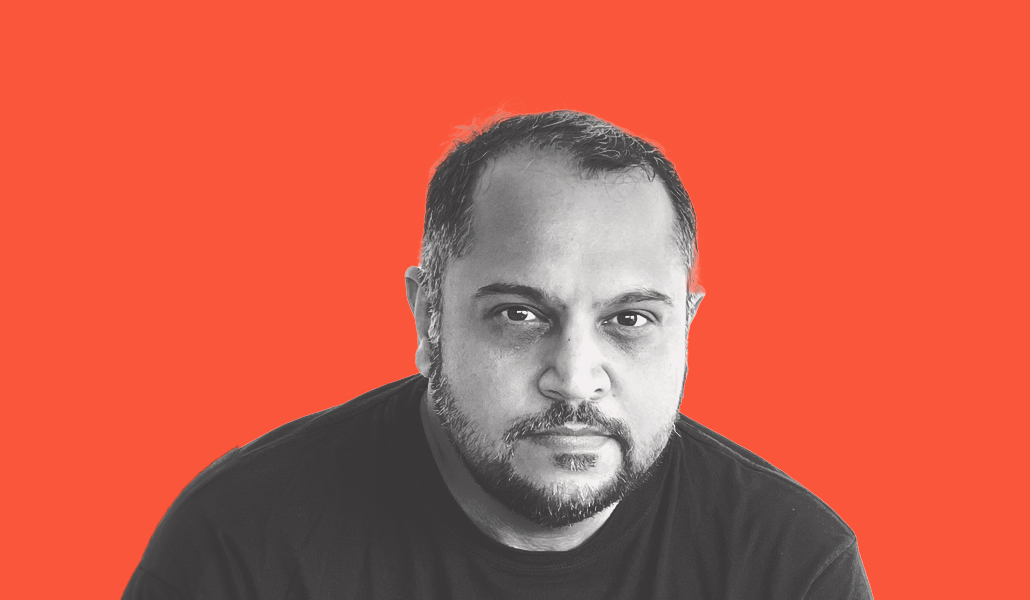Earlier this summer, the beverage behemoth appointed Pratik Thakar as the company’s senior director of generative AI under the company’s marketing transformation office, reporting to Frank Salmon, vp of marketing transformation. Thakar, previously a creative brand lead for Coke, had already been working on creative efforts to bring AI into the company’s marketing.
Thakar’s appointment earlier this summer is just one of the ways Coca-Cola is establishing AI as an important element in its consumer marketing efforts, which also includes pitching consumers to use generative AI to create art for the company. Last month, Coca-Cola held its first “Real Magic Creative Academy” in Atlanta, bringing together digital artists and creative technologists for a three-day symposium on AI. To get a sense of how Coca-Cola views this new role as well as what the symposium brought about for the brand, Digiday caught up with Thakar.
This conversation has been lightly edited and condensed for clarity.
You’ve been in this role for a few months now. Can you tell us about the creation of the role?
In my previous role, I was the creative brand lead for brand Coke. That’s where we’ve started using technology by doing multiple different types of technical partnerships – like partnering with Snap to create the AR-enabled vending machine; working on AI for our Masterpiece campaign; launching NFTs and digital collectables. Using all those different kinds of creative technologies and working with partners [had already been part of the job.]
We started using AI this time last year before the AI hype cycle [got going.] That was always a passion. Apart from that, at Coca-Cola we have this marketing transformation office. We look at how we take technology or any future-facing innovation and scale it; how do we place bets on some of the initiatives; how do we collaborate with people; how do we resource and allocate to prioritize some of those initiatives. We have to pick our battles. That’s where my role is – I’m looking at [this] through the larger marketing transformation lens, using technology and collaboration to collaborate with different experts and technologies to find the right experts, incubators and scale it. In a nutshell, that’s the role.
What’s your day-to-day like?
I’m basically working with lots of tech companies, different AI platforms, creative technologies – either freelance or independent or different groups. That’s where the Real Magic Creative Academy came together. We were working with a lot of those independent technologists coming from different backgrounds. I’m working on high-priority areas for the company to connect the dots when it comes to what this technology can bring, what all these creative innovators from different parts of the world [can do for the brand], as well as other high-priority projects figuring out how we can scale it [and] make a global impact.
So far, much of what we’ve seen in marketing when it comes to AI efforts has focused on the gimmick of using AI to do something. Can you tell us how you’re thinking of using AI in proper advertising now?
Looking at what we do, there are two or three elements [to how we’re using it]. One is that AI helps you perfect your craftsmanship. That’s what you saw when we created Masterpiece – it wasn’t 100% created by AI but AI helped us as a technology to make our craftsmanship better. That’s one. Another is OpenAI and what we created with the Real Magic campaign. That’s a very good example of ticking multiple boxes. We created our own sandbox, our own platform where people can access our brand, play with our brand, create artwork and it can go on billboards in Times Square and Piccadilly Station.
That is a good example to showcase how AI is not just a trick, gimmick or short-term effort but a consumer engagement platform. You are engaging consumers. You’re giving them a reward by putting their work on iconic billboards. Some of the winners we brought to Atlanta [for Create Real Magic]. All of those elements create a fandom. If the brand behaves in a pop-culture way rather than just another ad campaign, then we stay in the culture. We build our brand into the culture of creativity. We always say that Instagram made everyone an influencer, TikTok made everyone an entertainer and AI is making everyone an artist. Coca-Cola and art have a long history – working with Andy Warhol and all those iconic artists. It’s a great thing to democratize art and technology and create something together. I’d look at it from that lens.
With AI’s impact on marketing, what are some misconceptions about the perceived threats AI poses to advertising in the near term? The idea of democratizing art can be great but there are fears that come with that.
Any innovation, whether it’s space science, rockets or going to the moon or Mars, or even self-driving cars, people are concerned and rightfully [so]. They’re worried about safety and what’s going to happen. We always look at it as humans working with technology to create something that we couldn’t have created before. If humans can create, let’s create it with humans. If it’s impossible to create something in scale and craftsmanship, then let’s use the technology. Of course, we need to be super careful [when doing so with] rights of usage with different types of art. We cannot infringe on other people’s copyright or IP. We have to be careful. We look at it with respect for original art and not compromise in any way. That’s one way. If we unleash this technology and humans’ imagination together, that’s the real and that’s the magic.
You’re using AI and you’re also working with creators. Tell us a bit more about the Real Magic Creative Academy and what this does for the brand and AI?
Whatever we’re building, we’re building it on a very strong and powerful heritage. It’s a 136-year-old brand but we’re targeting teenagers, young adults. We want to make sure that we stay rooted in our heritage. Coca-Cola partnered with Andy Warhol or Sam Bloom, who created the current look of Santa, all those artists. We started the Real Magic Creative Academy off by taking everyone to our archive and showing them how Coke has worked with the Beatles, Warhol, Bloom, all these artists. Now artists and technology can come together, and the founding members of the Academy can inspire the future. They can create the next benchmark, so 30 years down the line people will see their work.
Is this something you’ll do annually?
The idea is that we’ll create a next iteration. [We’re looking at it] like a tech company holds a developer conference. That was the model. Here it’s like you bring in ideas, archive, heritage, all the history, and match that with what we want to build in the future. Coca-Cola works well when we bring people together across the world. That’s the magic.
We gave them real-life projects, real-life briefs. As their contribution to each (they were very different briefs), as they play a role in the coming weeks and months, of course we’ll pay them for their contribution. That’s the whole idea. They earned this Academy trip by participating in our Create Real Magic [initiative] and now they have the opportunity to work on real-life briefs for our future marketing. They will have a role to play in different ways [going forward].
Will their work now go to agencies and then go from there?
The best part of this Academy is that we brought everyone together. Agencies were there, tech production studios were there. All those people were there. It’s not a linear process that this one goes to the agencies – they’ll all co-create work and ideas. That’s the new part that other companies are not doing.
We had a lot of internal discussions about whether to have this role or not. We created Web3 campaigns, we created blockchain and NFTs without having any one title like a metaverse officer or head of metaverse, because it’s all about how you do great, innovative marketing in today’s time. So if today is about the metaverse or Web3, you need to do that. That’s how we looked at it. When we looked at AI, the first few campaigns with OpenAI and Real Magic, I did it as a creative director for brand Coke. But as we saw the potential with AI, generative AI especially, we realized that it’s not a passion or side gig. It requires a lot of time, partnerships [and] collaborations. We need to look at it from a much broader perspective. Believe me, it’s more than a 24/7 job. Then we realized [the position makes sense].
But again, it’s not just about what one person does, it’s about how the company sees the potential, how everyone works around it. One person cannot achieve everything. It’s about how the company saw the bigger picture. I’m just representing that bigger vision. Remember when everyone had a Chief Digital Officer when digital was big? But now everything’s digital. I feel that’s the future [for AI]. Right now, you need someone to champion it and focus, but I think in the near future you won’t require an AI person.
By the numbers
A recent LendingTree study reveals that the annual average spending on beauty products, cosmetics and related services in the United States amounts to $1,754. Interestingly, this expenditure trend sees a significant increase among younger generations. Millennials, in particular, allocate a more substantial annual budget of $2,670, while Gen Z members dedicate $2,048 to their beauty. Skincare and haircare products and services remain the primary focus of spending for individuals across all generations.
Find more details from the report viewed below:
- 64% of Gen Zers believe social media has increased their beauty product spending.
- Price and affordability are the primary concerns for 62% of respondents.
- Over 50% of consumers care about the reputation of a brand and the ingredients/formulations. — Julian Cannon
Quote of the week
“No one really wants to watch an ad, so we chose the influencers in the right territory and then just let them make great content.”
— Clint Patterson, T-Mobile’s chief marketing officer, on the brand’s TikTok approach to messaging.
What we’ve covered
- Anatomy of an ad tech outrage
- With TikTok’s new search ad toggle, agency execs see marketers accelerating organic search
- How Amazon’s payout structure for influencers puts a spotlight on creators’ low pay










